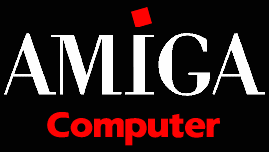










An Introduction to the

Computer
The Amiga was first introduced in 1984. It earned rave reviews. It
did what no other computer at the time could do. None came even close
to the Amiga for nigh a decade after its introduction.
Think back to 1984
The most powerful microcomputer in the world in 1984 was IBM's AT, based on a new, powerful, 8MHz 80286 CPU running MS-DOS and usually equipped with 512K of memory, sometimes expanded to 640K. Graphics were rarely more than 640 × 200 in two colors, but EGA (640 × 350 with 16 colors from a fixed 64 color palette) made in-roads then. All this was rather slow, though.
The Macintosh had been introduced at the 1984 Summer Olympics, featuring a black & white graphic user interface, hitherto found only on larger workstations, an icon-driven interface, 3.5 inch floppy drives, and the ability to address many megabytes of RAM all at once.
And into this world came the Amiga
The Amiga could multitask in 256K RAM, and multitask so well that not even today's high-end Pentiums with Windows 2000 manage the same instant and consistent responsivenesswq as a 1984 Amiga.
Graphics? From a palette of 4096 colors, the Amiga could display 16 at once on high resolution (720 × 596) screens, up to 64 colors on smaller screens, and with a special display mode (HAM, Hold-And-Modify, mostly suitable for images) it could display all 4096 colors at once!
And then it could animate its displays, using color cycling for stunning effects, or produce full-screen animations at speeds that are still difficult to match on today's fastest Pentium processor machines without a high-end graphics card.
But wait, there is more!
All the Amiga's graphics displays could go directly to a television set, a VCR, or a projection screen, without any additional hardware. This was ideal for creating or augmenting home video!
And then there is stereo sound! Upon startup, and as part of the power-on self test, the Amiga would play a short piece of music (7K), a piece derived from Wagner's Ring der Niebelungen.
In fact, the Amiga supported 4 independent sound channels, arranged to provide true stereo separation and digital sound. Programs could play digitized sounds or generate sound waves algorithmically. The widely distributed MOD format for songs was born on the Amiga.
And what does stereo sound, high speed graphics, and video compatibility add up to?
Multimedia in 1985 !
About ten years before the word multimedia was coined, the Amiga offered more multimedia power than most computers that are today sold under that diluted label multimedia.
So, why has the Amiga not conquered the world?
In a word: Malice. Malice and stupidity. Well, in two words: Malice and stupidity. And greed. Ok, three words: Malice, stupidity, and greed. And a bit of bad luck. Oh, heck. Just read the Amiga's history!
The alteration of any part of this content by manual or automated means (adding, removing, or in any other way altering links, text, or images) constitutes misrepresentation of our content in violation of United States copyright law. For more details, please see our content ownership details page for elaboration.



